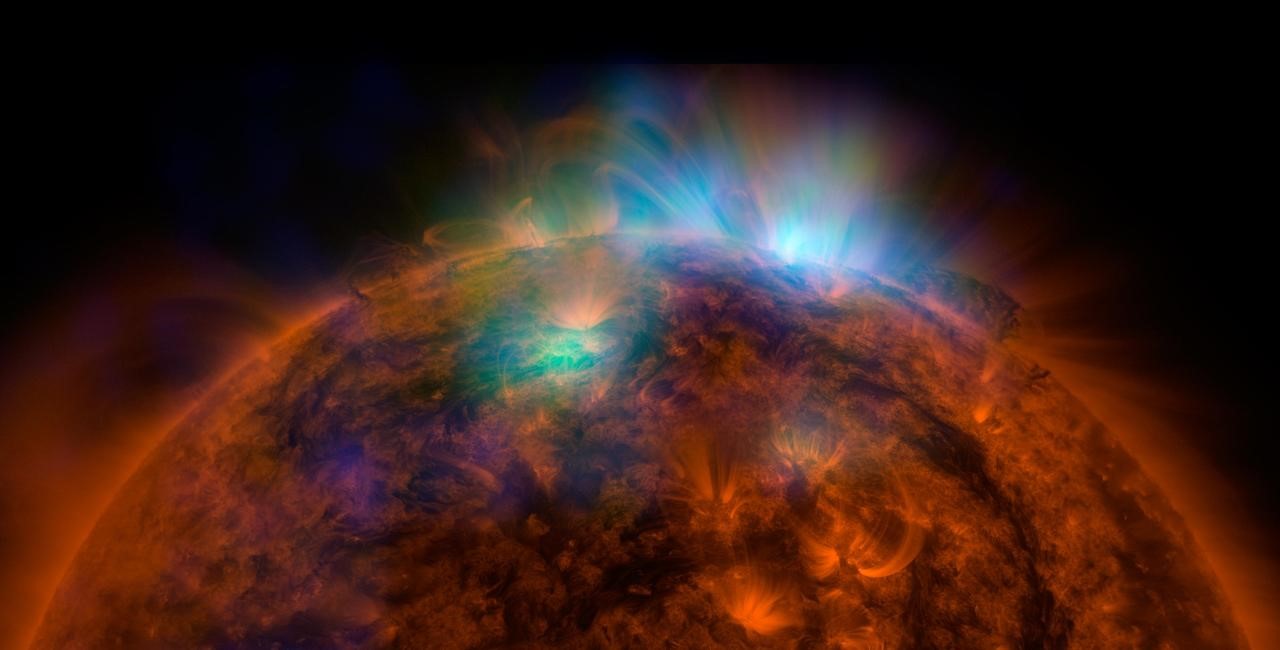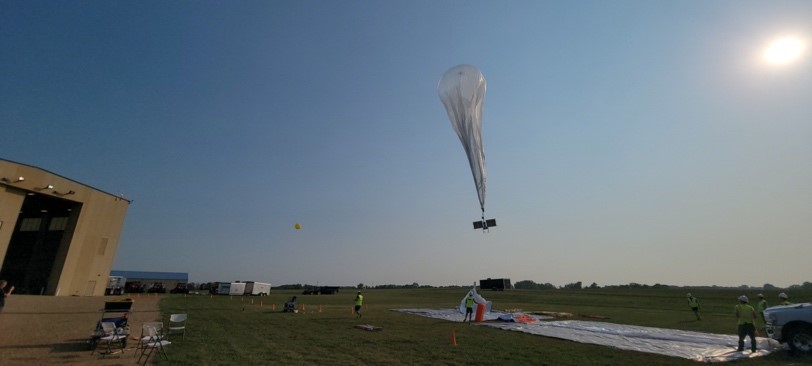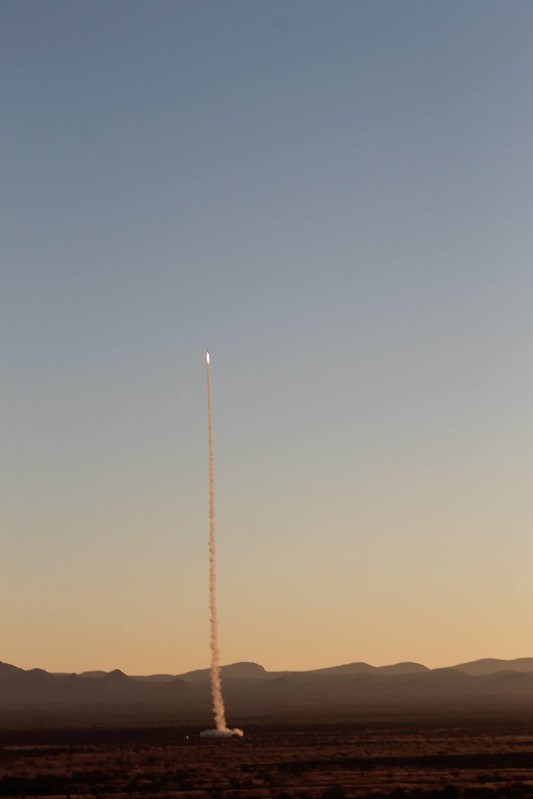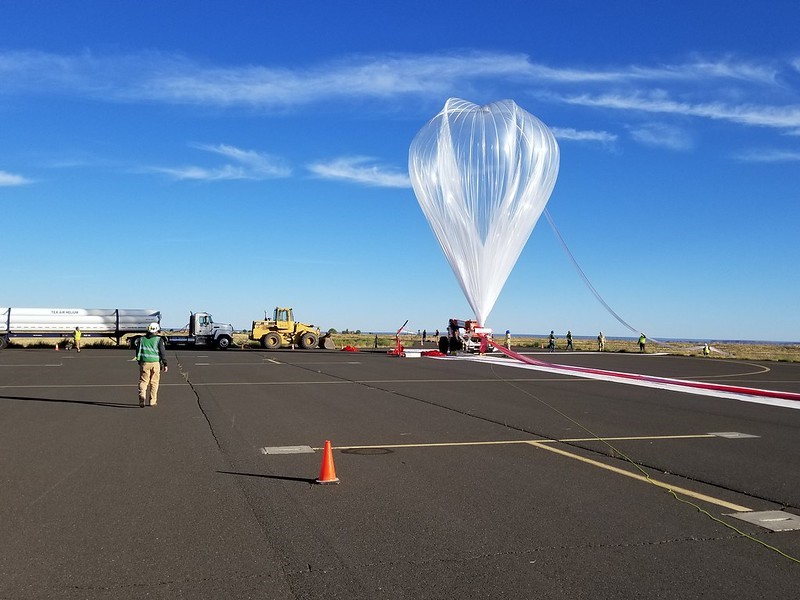As you read this article, you don’t need to worry that cosmic radiation might destroy the computer displaying it. That’s because the Earth’s atmosphere provides protection against such radiation. However, for astronauts relying on computing systems in space, cosmic radiation is a real concern. This is why NASA is supporting tests of radiation-tolerant computing systems on suborbital vehicles – and eventually on the Moon.
On July 28 and September 22, 2021, researchers from Montana State University (MSU) launched a radiation-tolerant computing system called RadPC on a high-altitude balloon in Sioux Falls, South Dakota from Raven Aerostar. Over the course of the two flights the balloon reached altitudes up to 75,000 feet and provided a total of over 80 hours of flight time, enabling researchers to test the computing technology against more than 3,000 injected system faults; the RadPC recovered from all of them successfully. The flight was made possible with funding from NASA’s Flight Opportunities program, part of the agency’s Space Technology Mission Directorate (STMD).
“STMD is all about creating and fostering collaborations and opportunities for the development of groundbreaking technology. We’ve tried to create a space for rapid development that allows technology from our partners in academia and industry to flow between NASA programs and opportunities,” said Christopher Baker, program executive for NASA’s Flight Opportunities and Small Spacecraft Technology programs. “It’s really a great model for development and partnership within and outside government.”
The recent balloon flight was one of several suborbital flight tests for the RadPC technology in advance of planned lunar testing as part of NASA’s Artemis program. The goal? To make sure the computing system can withstand the high-energy radiation particles emitted by the Sun and other celestial bodies.
“Once you leave Earth’s atmosphere, you lose the protection it provides against cosmic radiation, which can cause intermittent faults in computing systems or even full crashes,” explained Dr. Brock LaMeres, professor at MSU and principal investigator for the RadPC.
The innovation is designed to replace failed processors in real time through its redundant core processing system. It includes multiple cores on a single chip, allowing the system to switch from a failed core to a working core. RadPC also includes background memory scrubbing and error correction codes to further ensure its performance and fault-recovery capabilities.
“We know computing systems will get hit with radiation in space – that is inevitable – so what we’ve done is build a system designed to expect it, anticipate it, and recover from it quickly,” LaMeres said.
RadPC is scheduled to fly to the Moon in 2023 for testing on the lunar surface to validate its functionality for long-duration space missions. According to LaMeres, the lunar test marks one of the final steps before the technology could be widely used in satellites and spacecraft.
Advancing Technology with Successive Flight Testing
In preparation for the lunar mission, LaMeres and his team of students have been working with several suborbital flight providers through Flight Opportunities to refine the innovation’s design.
Flashback to 2014: RadPC was selected for funding under NASA’s TechFlights solicitation, through which MSU selected sounding rocket company UP Aerospace of Denver for their very first test of RadPC outside of a ground-based lab.
“That flight was amazing and such a humbling experience – it taught us so much,” said LaMeres. “It helped us mature the entire system to the point where we could actually build space-grade hardware.”
A second sounding rocket flight test in 2016 provided further refinement of the hardware along with the opportunity for MSU students to engage in 10 full days of rigorous integration and test work – this time on NASA’s Terrier-Orion rocket system launched from the agency’s Wallops Flight Facility in Virginia.
At altitudes of 400,000 feet or more, the sounding rockets provided the MSU team with data about how RadPC might hold up in a space environment – but over a relatively short amount of time (10-15 minutes). The team next looked to high-altitude balloon testing for longer duration exposure.
In a 2019 flight on World View Enterprises’ Stratollite high-altitude balloon, the team collected data over four hours. Finally, the team’s two recent balloon flights of RadPC on Raven Aerostar’s Thunderhead System balloon represented a culmination of the previous suborbital tests, with an improved payload design informed by the data gathered on previous flights. Data obtained from all flight tests will enable preparation for the upcoming lunar mission.
Suborbital flight testing facilitated by Flight Opportunities has also helped mature RadPC for missions on small satellites as well as testing on the International Space Station. LaMeres also started a small business called Resilient Computing to support the commercialization of the RadPC technology and has received a NASA Small Business Innovation Research award.
“There would have been no chance of us achieving this success without Flight Opportunities,” said LaMeres. “There’s simply no way you can get into these types of orbital missions unless you have flight heritage and you’ve shown through flight testing that you’ve actually taken the steps to understand how to build the systems NASA needs.”
About Flight Opportunities
The Flight Opportunities program is managed at NASA’s Armstrong Flight Research Center in Edwards, California. NASA’s Ames Research Center in California’s Silicon Valley manages the solicitation and evaluation of technologies to be tested and demonstrated on commercial flight vehicles.
By Nicole Quenelle
NASA’s Armstrong Flight Research Center


































